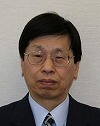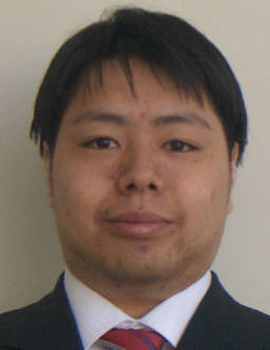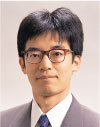First and foremost, the Image Processing Laboratory engages in research and development of image-based pattern recognition including some areas of Artificial Intelligence, database organisation, retrieval, and robotics. More specifically, as can be seen from the background information and the recent research publications of the members of the laboratory, 2-dimensional Continuous Dynamic Programming for non-linear image matching, 3D image reconstruction, object tracking in a time-varying image, image retrieval from video data, and extracion of the Internet community are our current focus.
Related to the recent progress of the web, a huge amount of multimedia data without index becomes available to store in our PC's. However, no sophistcated methodology to manage such data has been developed so far. So that we are solicited to attach an index to each data. Our research aim is to develop algorithms to realize automatic annotation to real word data for integrated retrieval of multimedia information. The algorithms include self-organisation and transformation among representation of multimedia and feature extraction and recognition of real data. Real world data includes video, still image, speech, music, sound, and text each of which has not been indexed by labels.
An example of multimedia integration retrieval called “CrossMediator” developed by ten-year project (1992-2002) RWC of METI (Japan). Some parts of CrossMediator have been in the commercial market by through a private company. Prof. R.Oka was a chief of group which developed "CrossMediator". Our laboratory will pursue to develop more sophisticated functions which might reveal a new generation of the Internet. Speech retreival system used in CrossMediator is used for developing new types of commercial products. At the present time we use two kinds of index for searching video data. One is used to obtain the target media from Youtube by using index. The other one is used for searching parts of the target data which are not indexed.
One of the recent progress is developing a set of algorithms for spotting recognition and tracking objects in a time-varying image. These algorithms enable to realize automatic anonotation of video image capturing moving objects. The most promissing algorithm called 2-dimensional Continuous Dynamic programming (2DCDP) was proposed by our laboratory. This enables to perform full pixel matching between images. The full pixel correspondene is used for reconstructing 3D shape from at least 3 images obtained from different viewpoints and also gives a quite precise features like optical flow from a motion image. The 2DCDP is also applicable to non-linear registration for medical images to extract different parts between normal CT imagesand abnormal CT images.
Another recent progress is developing a spotting algorithm for song wave retrieval. A large amount of song wave data is available for anyone along with the progress of storage hardware of music data. But the progress of technology for accessing the song wave data seems quite slow so that we must use conventional and not sophistcated tools. Our new software can provide users a convenient way to find and rerieve the song wave data by singing an arbitrary part of it which he/she wants to hear.
The Internet is regarded as a network composed of virtual communities. Visualization of the community is becoming an important research target. Our lab is developing a sophistcated algorithm based on so-called Associated hyper-linked word space (A-space). We use the algorithm to detect clusters each of which corresponds a virtual community. Visualization of each virtual community is realized by showing the content extracted from the web pages included the community.
On the other hand, we have carried out several research projects related to complex systems in which many independent components interact with each other and emerge global phenomena. Particularly, we have conducted on multiple robot control, and energy efficient walking control in biped robots.
With respect to multiple robot control, we have analyzed the dynamics of multiple mobile robots as a swarm under the mixture condition of long and short range communication, and evaluated the required amount of communication for the multiple robot control. Particularly, we have investigated the relation between the speed of convergence and the graph spectra induced from the swarm robot network, and we have developed a stable and fast swarm robot control method. As implementing actual multiple mobile robots, we need a sensing system. In this project, we have developed a sensing and position estimating system for the robots, and evaluated the accumulated errors.
In terms of the walking control of biped robots, we have set the problem to walk down steep hills, which is known as steps of walking robots fall into chaotic and unstable one. We have developed a control method for the problem, and evaluated it with numerical experiments. The results show it is capable to walk down the steep slopes stably with less control energy consumption. is capable to walk down the steep slopes stably with less control energy consumption.





